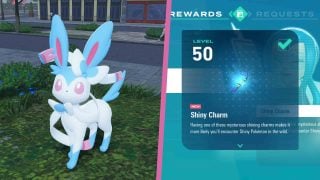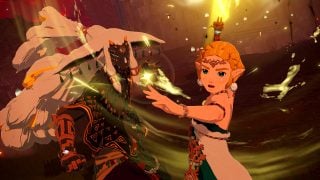If there was ever a series that was impossible to describe to someone that had never played it, it’s Animal Crossing. Wikipedia describes it as a “social simulation” series, an off-shoot of the life simulation genre made popular by games like The Sims, but trying to sell someone on a “social simulation” can prove tricky. If I had to describe Animal Crossing, I’d describe it as… magic. And I know how ridiculous that sounds, but it really is. It’s warm; it’s cozy; it brings people together. It’s coming home after a long day and curling up in bed. It’s a blank canvas on which you can spend hours gushing creativity through your fingers. It’s catching 17 sea bass in a row trying to land a coelacanth. It’s checking the time and realizing you’ve been playing for 9 hours straight and you missed your friend’s birthday party you said you were definitely showing up for and now she won’t return your calls. It’s–
It’s a lot of things, and Animal Crossing: New Horizons takes those lots of things and improves on them in almost every way — while also making some sacrifices that may displease long-time fans. In many ways, it’s a step forward for the series. But, as one may argue is typical of Nintendo, this progression comes hand-in-hand with some puzzling gameplay and design choices.
Premise
Okay, but let’s get serious here — here’s what Animal Crossing: New Horizons is. You play a customizable human who moves to a deserted island as part of a vacation package run by an anthropomorphic raccoon named Tom Nook and his apprentices Timmy and Tommy. On this island, you live alongside other animals of various species, like birds, mice, dogs, cats, eagles, alligators, and cows. It’s your job to build up the island by establishing shops, decorating it with furniture, planting trees and flowers, building infrastructure, and encouraging new animals to move in. You also get your own house (which starts off as a measly tent) that you can decorate to your heart’s content. You owe a mortgage to Tom Nook, which you pay off using the Animal Crossing universe’s currency: Bells. By paying off your mortgage, you can then upgrade your house to bigger and bigger sizes.

My greatest achievement this year. And not just in the game.
Bells can be earned by doing various hobbies across the island and selling the fruits of your labor, like fishing, bug-catching, digging up fossils, and picking literal fruit. You can also talk to your animal neighbors and do favors for them, give them gifts, play games with them, and more.
The game runs in real-time, meaning if it’s a winter day at 2 p.m. in real life, it’s also a winter day at 2 p.m. in the game. Seasons change, rain falls, snow covers your settlement, and the sun rises and falls behind the ocean. Animal Crossing versions of holidays are also celebrated in-game, like Christmas, New Year’s, Thanksgiving, Halloween, Easter, and more, with special visitors arriving to hand out rare furniture and other items.

Zipper T. Bunny is just one of many holiday characters you’ll run into during your time with Animal Crossing: New Horizons.
There is no “end game” in Animal Crossing. It’s what you make of it. You set your own goals (although New Horizons introduces a sort of “micro goal” system that can help with this). Is your aim for today to make 75,000 bells? Do you want to pick all the weeds on your island? Redecorate your house? Visit your friend’s town? Catch as many fish as you can in one sitting? Design a super-cute blouse? Make a kick-ass baseball cap? Go for it.
Gameplay
Animal Crossing: New Horizons departs from the series by having the player character move to an almost completely deserted island. In previous games, players were simply new residents that moved to an already-established town (and in New Leaf, they became the mayor of said town). While many long-time players may have been unsettled by the changes when the game was revealed at E3 2019, the game returns to familiar Animal Crossing gameplay rather quickly.
The actual time spent on the island in its deserted state is surprisingly short. The first few days on the island are used to gather resources and build up a town one building at a time. Your fearless leader Tom Nook names you “Resident Representative” and gives you almost complete control over how the island progresses. Each day, the player will be saddled with a task: picking plots of land for new residents to live in, finding materials to build a shop, and paying off the debt they owe on their airfare and tent by doing everyday activities around the island.

Every fish or bug catch you make has a clever (or not so clever) pun to top it off.
I loved this new island setting, pole-vaulting across waters and using ladders to scale cliffs. I truly felt like my island was my own — my own piece of clay to shape and mold however I wanted. Becoming familiar with how the land was laid out… mentally making plans of where everything’s going to go. There’s something so atmospheric about being on a deserted island, as well. I remember those early nights, feeling a strange sense of loneliness when I imagined the empty fields on the other side of my rivers. It was almost spooky thinking about those hollow forests at night in the unknown just over yonder.
For the first time ever, players have direct control over where major buildings are placed in their town. Want the museum to be built overlooking the sea? Want your shop right next to Resident Services? Want your favorite villager’s house right next door to yours? All of that and more can be yours thanks to the beauty of starting your town from scratch. Not only that, but you can freely place almost any furniture item outdoors, meaning you can at last have that patio or garden you’ve always dreamed of.
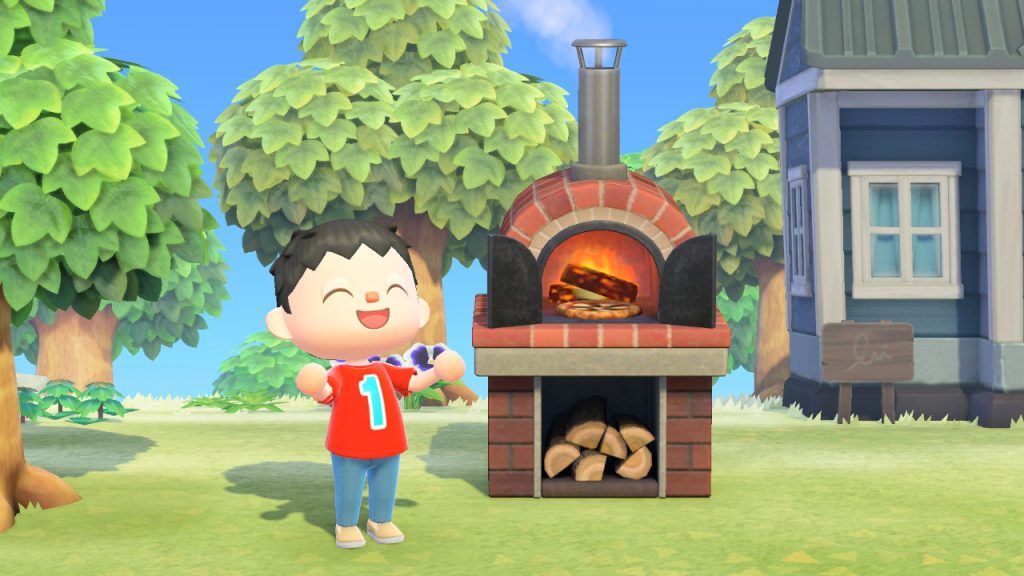
I put this oven outside one of my villagers houses and he never even offered me a slice of pizza.
The amount of power you can exert over the growth of your island is the best new feature of New Horizons. In past games, players were limited by what layout they were given at the start of the game. If you didn’t like where your town hall was, tough luck. Reset and try for a better layout. On your deserted island getaway, you call all the shots regarding where shops, houses, bridges, inclines, and — eventually — even rivers and cliffs go. If that wasn’t enough, you can unlock the ability to move (almost) everything at any time — for a fee, of course.
With all this authority at your disposal, though, there are some frustrating limitations. The Resident Services building and airport cannot be moved. Ever. When I started my island, I stressed and debated for days whether or not to restart because I was unsure about my Resident Services building location and I knew I’d have to deal with it for years of play. I eventually came to terms with it and made it work, but I have to ask… why? Why tease us all this freedom but then arbitrarily limit us with our Resident Services building location, or our airport location?
River outlets, the rocks on your beach, the location of your pier, even the color of your airport’s roof… These all can’t be changed, either. At the start of the game, Timmy and Tommy give the player four island map options to choose from (which you can then reset for by resetting the game). Make sure to be absolutely 100-percent okay with where these unchangeable locations are, because you’ll be stuck with them forever.
Perhaps Nintendo wants us to have certain landmarks that go untouched from the birth of our islands — areas that are static while we play god with everything around it. Maybe Nintendo decided the Resident Services building is just too big to move. Whatever the reason, I find it silly to give players so much unprecedented freedom over their towns — letting them carve out new waterways and raise mountains, even — only to draw the line at a handful of man-made buildings.
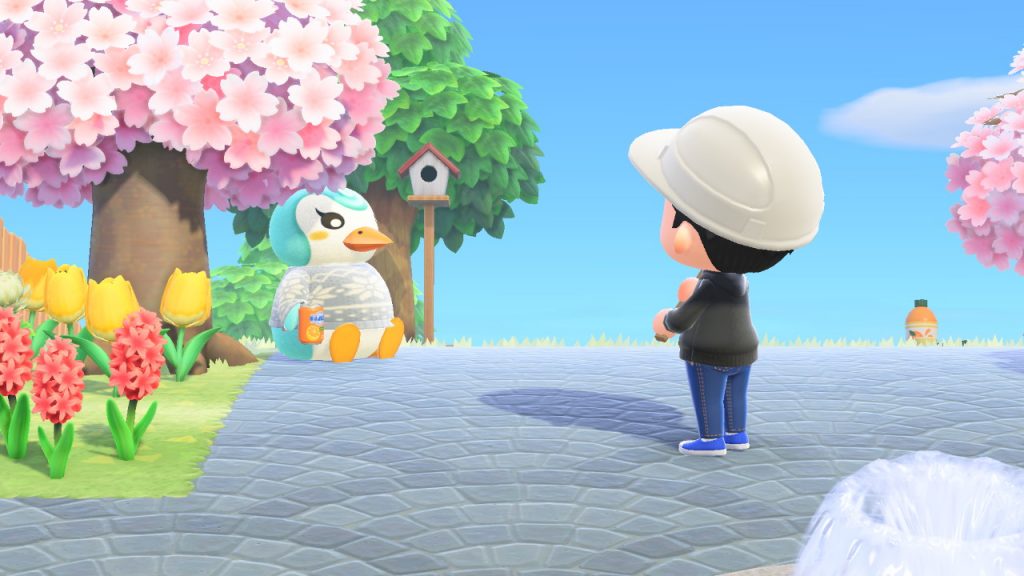
Sprinkle living her best life, sitting on the pavement I laid out in my self-made park.
Native paths are also introduced to the series for the first time ever, letting players slap down brick, stone, and even custom-material walkways all around their islands. This is definitely a welcome addition, but like other cool new features, it comes with odd limitations. You can’t make diagonal paths, which means you can only pave horizontally and vertically. Unless you plan your bridges and inclines to all meet at perfect intersections, you’ll be stuck with jagged, clumsy workarounds for having winding paths through town. Paths of different materials can’t meet, either: If you want a stone path that seamlessly blends into a brick one, or a dirt path that meets your airport dock, that’s a no-go. You’ll be forced to deal with a noticeable patch of grass between them. And finally, bizarrely, paths will seamlessly connect to bridges, but won’t at all with inclines. While the oversights of this system may not be a dealbreaker, it’s frustrating for the creative players Nintendo is trying to appeal to when they implement what can only be called half-measures for certain features.
Perhaps the second-biggest addition to New Horizons is its crafting mechanic, which allows players to use materials they find to build new and exciting items to decorate their homes and islands with. Crafting was first seen in mobile game Animal Crossing: Pocket Camp, but is a bit more fleshed-out in the series’ Switch installment.
From time to time, players will receive new “Recipes,” which they can read to learn new things to craft. Players will find these in balloons that float across their island skies, from villagers that hand them out as gifts, and even in message bottles that wind up on shore. Recipes will require resources like ore, stones, wood, and tree branches, all of which can be found by exploring one’s island. With these materials, players can craft tools like fishing rods, shovels, and bug nets, and flooring, wallpaper, and furniture.
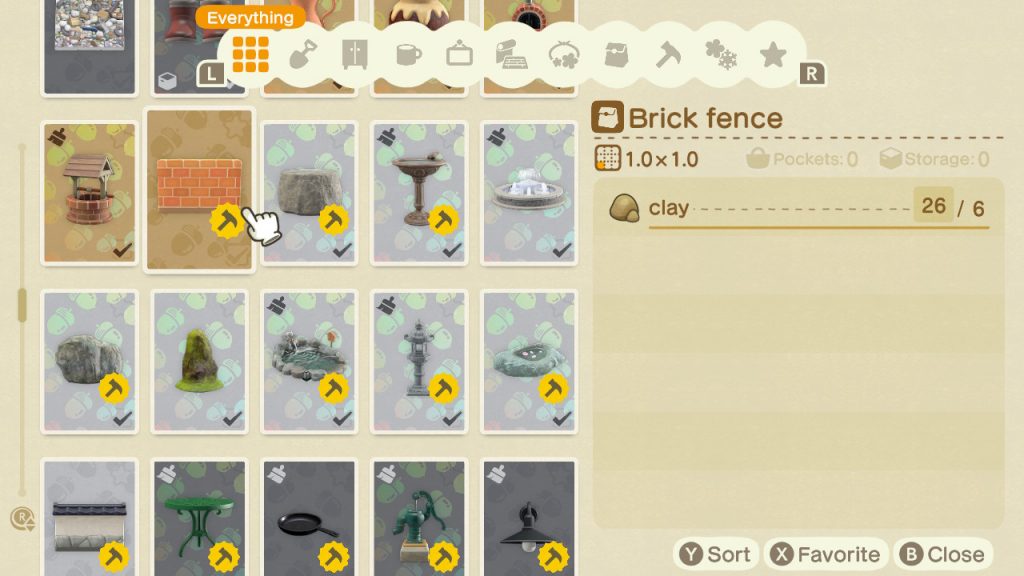
The variety of tools and objects players can craft in Animal Crossing: New Horizons is substantial.
It’s an interesting mechanic, for sure, and at first, I had a lot of fun gathering required items to craft certain things. But I soon found the feature tiresome — especially when it came to my tools. Players start off with “flimsy” versions of classic Animal Crossing tools, which break rather easily after repeated use. This made sense to me — I figured if I progress far enough, I’ll be able to craft the standard tool sets I was used to in past games that wouldn’t break.
Nope. Even regular fishing rods and shovels and even slingshots will break after using them for, arguably, not even a reasonable amount of time. It’s downright annoying to be in the middle of fishing only to have to run back to your workbench to craft another rod. Durability is even an issue with gold versions of tools for some inexplicable reason. In previous Animal Crossing games, golden tools would carry prestige and even additional features — like a wider net for the bug net or three pellets for the slingshot. Not here. Now they’re just like regular tools that just don’t break for longer periods.

I’ve seen this text box far more times than I’d like.
Despite the grievances I have with the crafting system, it’s a welcome addition to Animal Crossing and helps make the items you collect and scatter about your house and island feel more personal. That well you placed next to the tailor’s? You made that. Those rain boots you’re wearing? You recycled those from a pair of nasty, algae-ridden shoes you fished up from the bottom of the ocean.
To spice up everyday life on the island, events make their return from previous games in the series, as well. Most in-game holidays like the Harvest Festival (Thanksgiving) and Toy Day (Christmas) are missing from the base game but are planned to be added in via free updates, with one, Bunny Day (Easter), already having been patched in. I go into my thoughts on this content delivery system further in the review. Holidays aside, there are a handful of special activities in the base game already that only come around one or a few times a year.
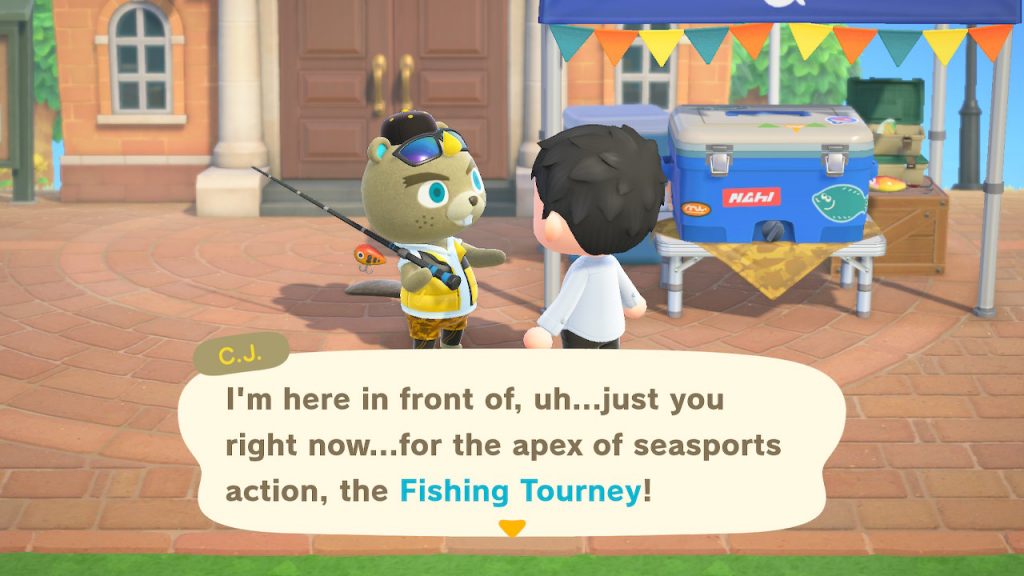
Selfie-snapping C.J. is the host of the “once-in-a-season” Fishing Tourney.
The Fishing Tourney and Bug-Off return with new hosts this time, and Nintendo has done a great job making these events actually, um, fun this time. In past games, the Fishing Tourney would involve just catching the biggest fish you could for a chance to get a gold fishing trophy and a piece of fish-themed furniture (in New Leaf, at least). After participating a few times, these events would grow stale, and I’d find myself outright ignoring them when they’d come around again. I mean, how many gold trophies do I really need?
Now, the Fishing Tourney host, C.J., will purchase fish you catch at noticeably higher prices than you’d get from selling to your shop, and the rules of the game have been altered. Instead of fishing all day to land the single biggest fish you can, you can enter multiple times to play short three-minute romps where you try and catch as many fish as possible. C.J. will then award you points, which you can redeem for fish-themed prizes. I quite enjoy this new take on the tourney, mainly because it encourages me to participate each time because of the inflated prices at which C.J. will buy my fish.
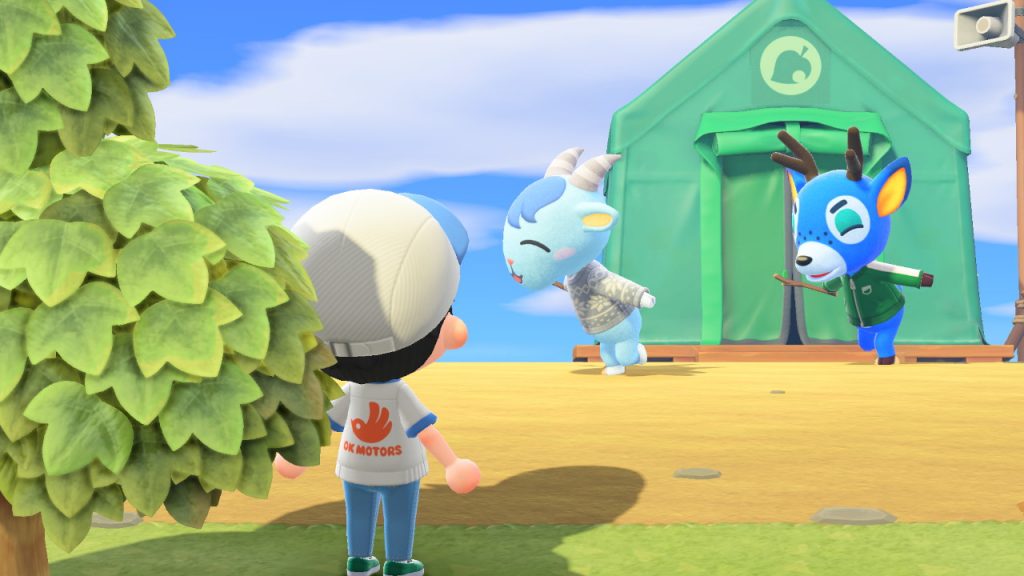
I love these two idiots.
Villagers are also more expressive than ever before. You can see your animal neighbors actually doing things around your island, like reading books, lifting weights, and even doing yoga in the town square. I remember being completely shocked seeing two of my villagers, Sprinkle and Lucha, having tea together in the plaza, sitting on little stools they’d set up. Villagers will greet each other with little waves, and even special characters can be seen doing cute new activities; each time you enter Resident Services, for example, Tom Nook and Isabelle will be doing something different, like doing stretches or feather-dusting their desks.
But while villagers appear more interactive, they also feel more limited. Dialogue with villagers is perhaps the worst it’s ever been in the series. Talking to a villager more than one time a day will cause them to greet you with polite irritation every time after — essentially telling you you’re speaking to them too often. More often than not when talking to a villager, you’ll receive just a single line of dialogue. Where is all the interesting chatter? The game is called Animal CROSSING, for crying out loud! The animals make the game!
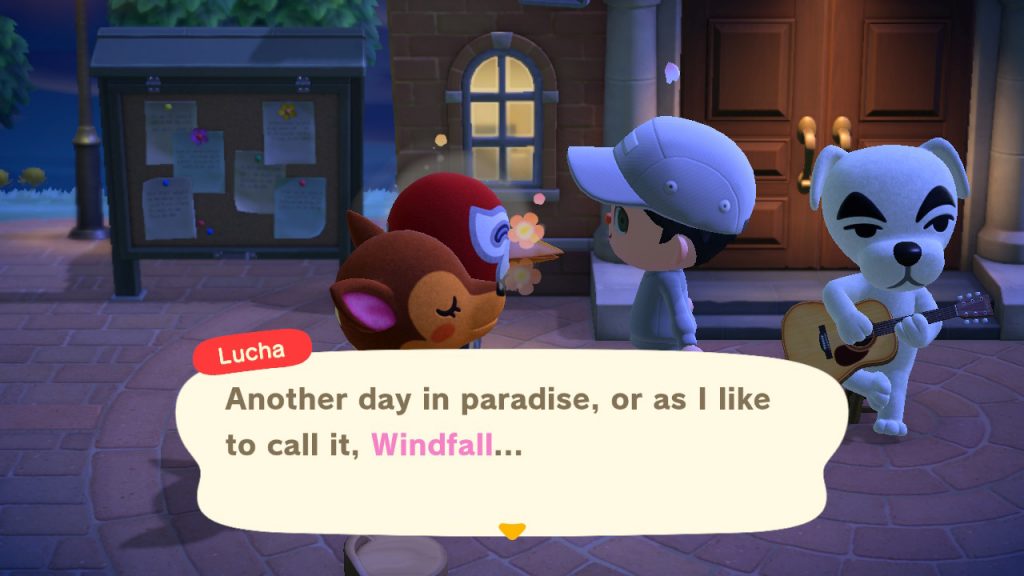
This is seriously all he said to me.
In my over three weeks and 85 hours of playing, I haven’t received a single favor request from any of my villagers. In previous Animal Crossings, villagers would ask you to hand-deliver items to other villagers, or even get back items others had borrowed from them. I know this feature exists in the game (from reading experiences from other players), but it’s insane to me that I haven’t encountered it yet.
Several other new features are worth mentioning. Players can now freely customize their characters’ looks at any time, including previously-permanent things like eye and mouth shape. Houses are given closets and storage space, where players can deposit hundreds of items and easily pull from them when they desire. Closets, in particular, are very cool, as they allow players to try on and preview outfits using a slick new UI. Home interiors can also be rearranged with a handy, easy-to-use menu, and wall decorations can be placed at any elevation the player wants.
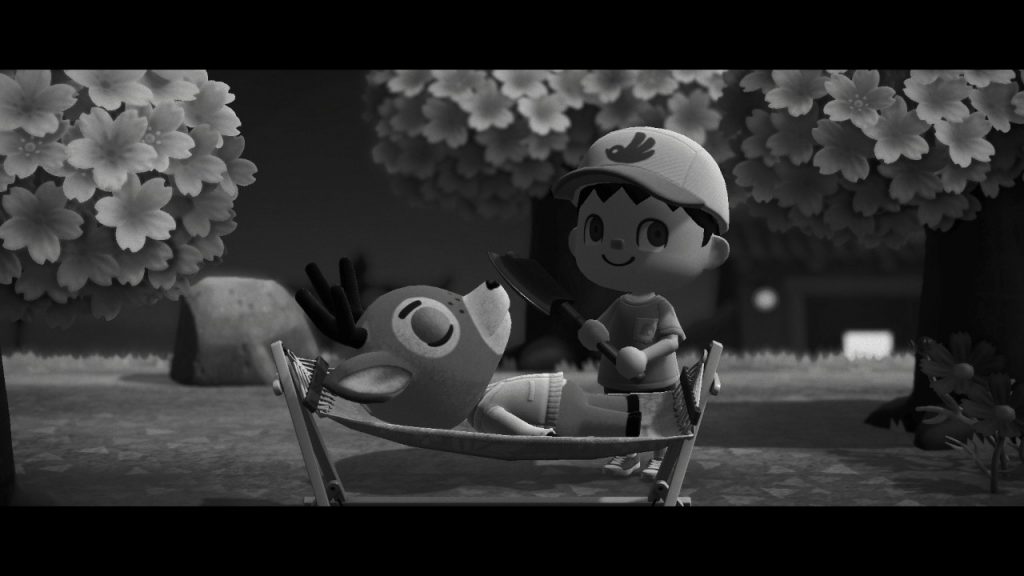
The game’s camera feature lets players use a variety of filters and frames for their in-game screenshots.
The NookPhone was also added, which is an all-in-one solution to keeping track of island life. Here, players will find “apps” to keep track of their Recipes, the creatures they’ve caught, and their Nook Miles goals. Nook Miles are another new mechanic, “gamifying” a game that has traditionally never been a traditional game. By completing both daily and long-term tasks, players earn points that they can then redeem for special rewards. It’s a fun gameplay feature that helps goal-oriented people figure out things to do in the otherwise open-ended game.
Ultimately, everything good about Animal Crossing is still here. The game is just downright fun — and addicting — no matter what you decide to do on a particular day. There’s so much content here to enjoy, from collecting bugs and fish to decorating your home and island and much, much more. Each day will give you something to look forward to; each day is filled with new surprises, whether its a villager asking to play hide-and-seek or task you with finding treasure, finding that rare piece of furniture you’ve had your eye on, or striking gold with your axe to a rock. Heck, one night I got 30,000 Bells from a gift on a balloon that was floating by!
https://twitter.com/danielvdell/status/1248492549129400324?s=20
Presentation
Animal Crossing: New Horizons is the best the series has ever looked — and the best it’s sounded in a long time. Graphics are beautiful and rich with detail, like swaying leaves on trees during windy days and the way the player’s hair gleams in the sunlight. I’m in love with how colors pop during the daytime and how dazzling the sky looks at sunset, painted with orange and red hues. When you’re indoors during a storm, you can see rain hammering the windows. Floors actually REFLECT things now, too! I mean, just look at this:
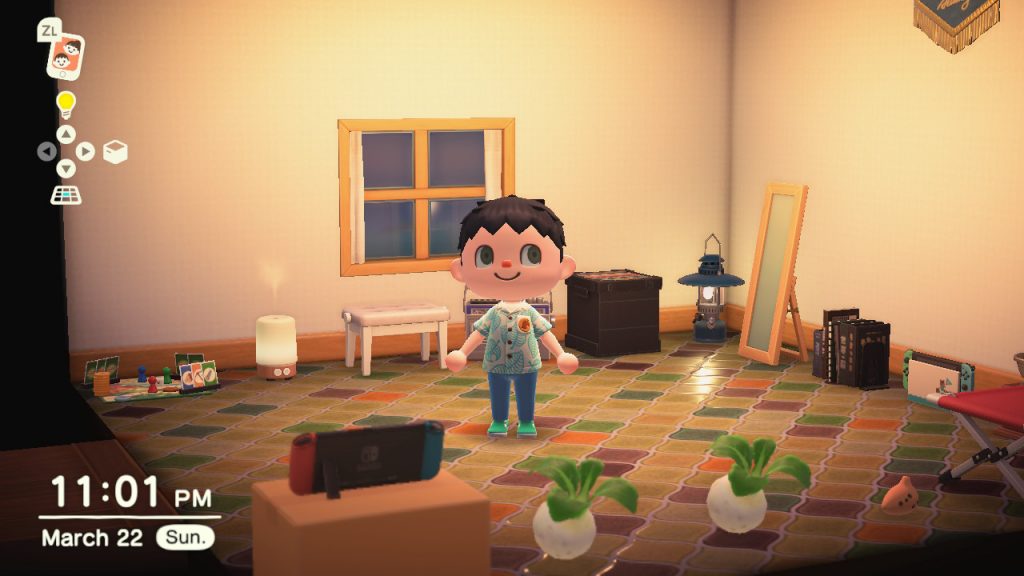
Ignore my horrible early-game interior design skills.
Like I mentioned before, characters are more animated than ever before, and thus feel more alive than ever before. I’m constantly surprised by the things my villagers do, like seeing Elvis jump up on his in-house throne and pull out a book to read, or hearing Avery singing an Animalese song in the moonlight (this was actually a bit unnerving, to be honest).
The music in Animal Crossing: New Horizons is phenomenal — a return to the quality of the original GameCube game’s. Starting with Wild World, music in the series was significantly toned down and, dare I say, boring. Everything was too chill — too relaxed. With New Horizons, we’ve returned to having music with soul, where every hourly track is made to match the feeling of the time of day — and there are some real bops here. Morning music makes you want to get up and run around and pull weeds, while evening music is more laidback, evokes calmness, and winds you down for the day. Check out the track for 8 a.m.:
https://www.youtube.com/watch?v=e9EwML77OlM
Non-hourly tracks are just as good, too. Just listen to this one that plays during each season’s Fishing Tourney and Bug-Off:
For the first week or so of gameplay, players are subjected to a single track that plays throughout the day. It isn’t until they unlock Resident Services that background music changes every hour, which is a shame: I fear some players will discount New Horizons’ soundtrack before they get to the good stuff.
Nintendo’s localization team has also made significant strides in incorporating inclusivity in New Horizons, which I feel should be recognized whenever possible. All player characters are now gender-neutral, meaning they no longer pick an explicit “I’m a boy” and “I’m a girl” option at the game’s onset, and can wear any type of clothing they like.
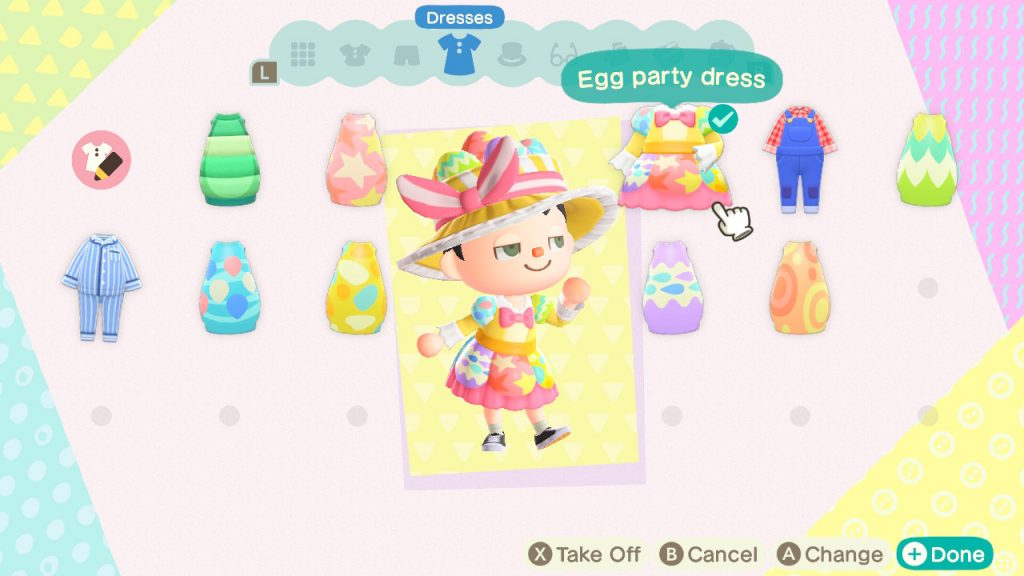
Players are free to express themselves through their clothing however they want. In my case, I’ve decided to wear this tacky egg-themed party dress and hat.
Players can also now freely pick their skin tone, meaning gamers with skin tones other than white can now feel fully represented in the game. In previous mainline Animal Crossing entries, if a player wanted a black or brown skin tone, they’d have to tan in the sun without an umbrella during the summer months — or on a separate tropical island location. Most insulting of all, this tan would, of course, wear off after a while.
LGBTQ representation is also included in dialogue, with certain villagers mentioning same-sex romances in comic books they like. Additionally, two male characters, C.J. and Flick, are vaguely implied to be in a relationship, with C.J. calling Flick his “partner” and raving about how talented he is as an artist.
Connectivity
Like past entries, multiplayer is a big piece of the Animal Crossing: New Horizons pie — but it’s a pie that feels like it was pulled out of the oven 20 minutes too soon. Islands can have up to eight different players living on it at once, but island progression is locked to the first player to start their adventure. Online multiplayer is also a mess and a depressing sign that Nintendo is seemingly never going to learn how to do online gaming. Playing online with friends requires manuevering an outrageous amount of menus and long-winded dialogue. When on an island and another player visits, every player on the island is forced to endure a long loading screen showing the visitor’s flight “landing.”
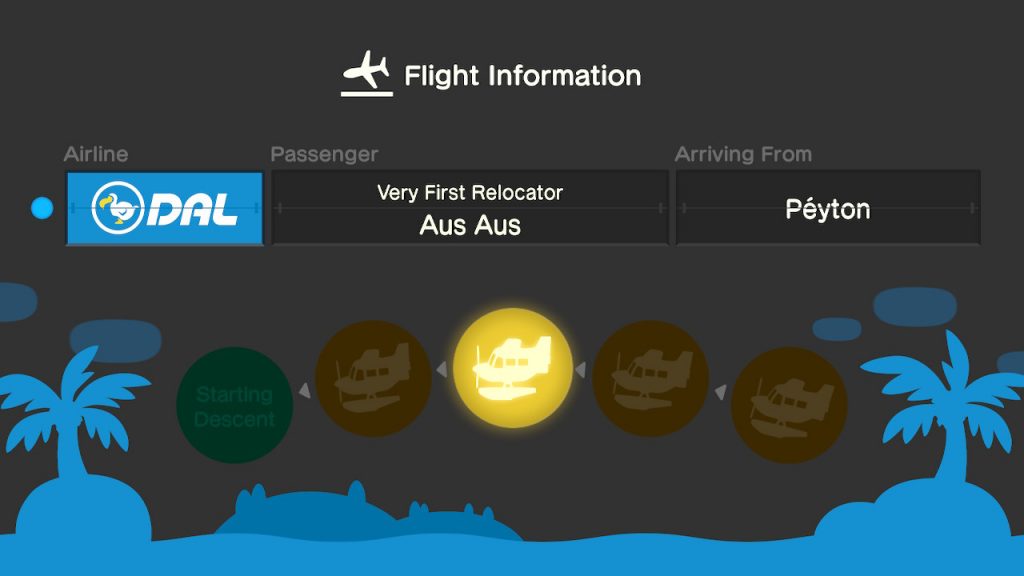
The bane of my existence. …The screen, not my visitor.
I bought my Pocket Camp-loving boyfriend Animal Crossing: New Horizons as a gift, and let me tell you: unlocking the ability to become in-game “friends” was such a hassle when it didn’t need to be. The NookPhone includes a “Best Friends” feature which lets you see when your friends are online and message them — even when you’re on your own island. But, in order to become “friends,” you need to first visit each other.
So we did so. Via local wireless connection. He came to my island and we played for a bit together. Strangely, afterward, he wouldn’t show up as a friend on my Best Friends list (and therefore, I couldn’t add him as a “Best Friend”). I thought, “Okay, maybe you need to visit over the internet.” So we did that. He came to my town over an internet connection, yet he still wouldn’t show up on my friends list.
At this point, I was beyond annoyed — especially given how many hoops you have to jump through just to visit someone else. Finally, we discovered he didn’t have the Best Friends app on his NookPhone because, in order to unlock that, he had to open his gates for someone to visit his town first. WHY? Why is that locked behind that particular way of playing with someone? Why wouldn’t it be unlocked when he visited me over local wireless, or when he visited me over the internet? It makes absolutely no sense.
I will say, though, that my favorite online feature that Nintendo reintroduced in New Horizons is the ability to send mail to your real-life friends over the internet (and, by extension, gifts). I love typing up a postcard to my Animal Crossing buddies and dropping them a piece of furniture or clothing I’ll never use, and it’s always a treat booting up the game each day and finding a new letter from them.
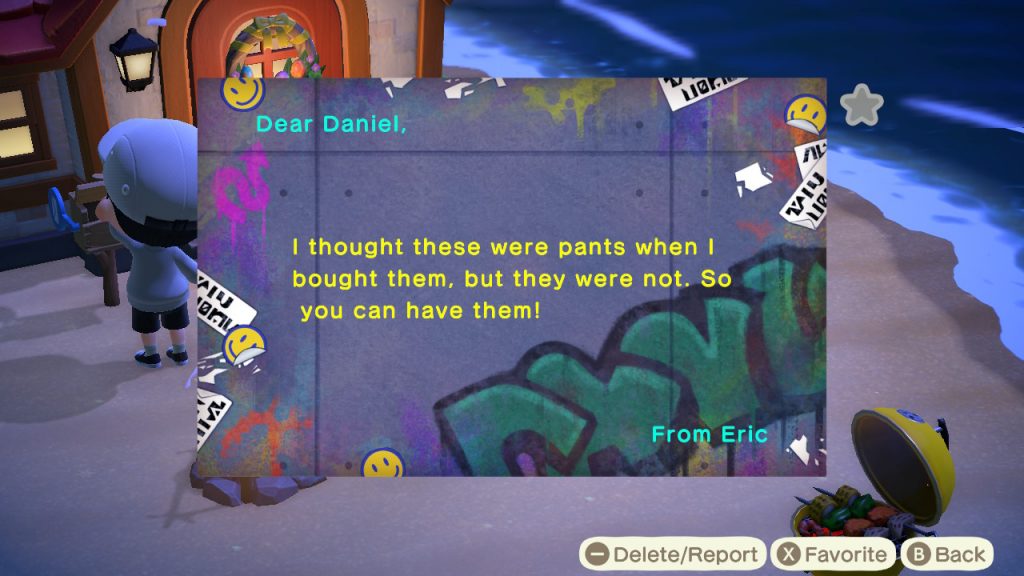
My friend accidentally bought denim leggings and mailed them to me.
Updates
Nintendo has positioned Animal Crossing: New Horizons as a sort-of “game as a service” title, much like they did with Splatoon 2, ARMS, and Mario Tennis Aces. The game at launch is missing a TON of features and characters that appeared in previous games, like Brewster and the coffee shop, gyroids, Crazy Redd and purchasable artwork, and virtually every single in-game holiday. Some characters like Reese and Cyrus have been made redundant due to streamlining features (in New Leaf, they ran a customization shop, but in New Horizons, players can freely customize most items via their DIY workbenches), but more than half of the iconic Animal Crossing cast is missing in New Horizons.
That’s where free game updates come in. The first day, launched on the same day as the game’s release, added the Zipper T. Bunny character and the Bunny Day (AKA Easter) event. Later this month, the game will receive another update adding the character Leif and an Earth Day event. It’s easy to understand why Nintendo has taken this approach with New Horizons: to maintain player interest throughout the year by adding new events and features. We already know Brewster, artwork, and more stores will be added to the game in a future update, which suggest many other “removed” characters and features will be added later down the line.
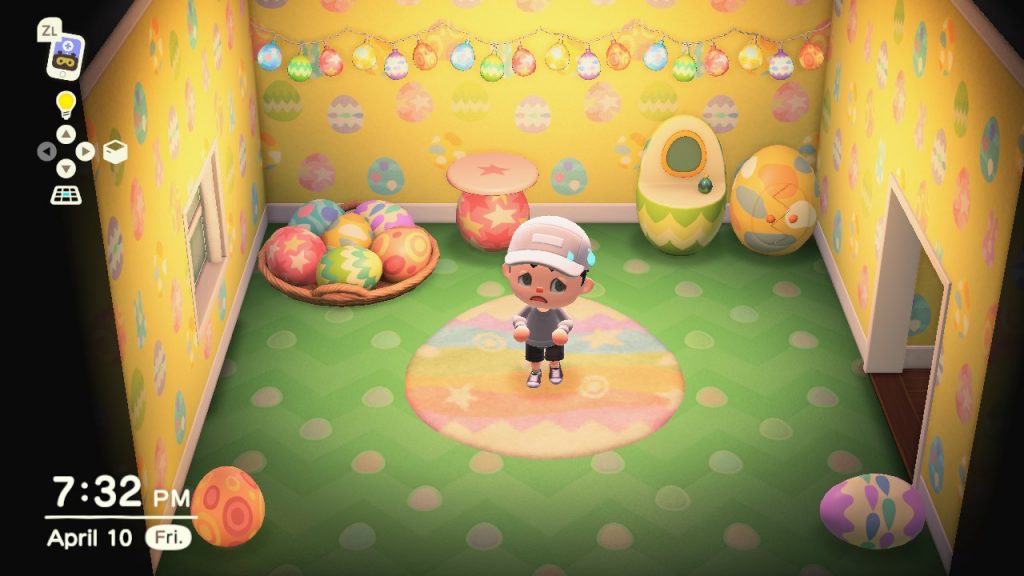
Dell-Cornejo, D. (Photographer). (2020, April 10). Perpetual Torment [digital image].
I don’t have a problem with this way of doing things — it gives me something to look forward to when things inevitability get stale. I’m already excited to see Leif again and see what goodies come along with the Earth Day update. My issue is the way Nintendo has revamped how holiday events work, apparently to complement the new crafting mechanic. In past Animal Crossing games, events were a one-day affair. Bunny Day was on Easter Sunday. It wasn’t a 12-day egg-collecting horror show like it is in New Horizons, where you have to craft 37 different items in order to “complete” the event. In City Folk and New Leaf, players would spend one single day hunting eggs throughout town, then trade them in to Zipper for prizes.
In New Leaf, these eggs were still hidden in the same places as New Horizons, like in rocks and the water. However, like I said, this was a one-day affair, meaning you wouldn’t be unintentionally pulling up eggs when fishing or mining rocks for half the freaking month. Why Nintendo decided to substantially lengthen the duration of holiday events (or at least this one) is a mystery to me but, to be fair, it seems they are listening intently to player feedback.
I just hope the rest of the year’s holidays aren’t like this.
Final verdict
I love Animal Crossing. I’ve loved it since my cousin gave me the original GameCube game for Christmas back in 2002. I’ve played every game in the series, including spin-offs like Happy Home Designer, Pocket Camp, and that one party game for the Wii U that was so god awful I’ve completely blocked it from my memory.
I can say with full confidence that Animal Crossing: New Horizons is the best in the franchise. While there is plenty here to criticize, the gameplay is both refined and refreshed with new mechanics that make New Horizons feel like a true sequel to New Leaf. There is a lot missing, sure, but what remains is well worth the $60 asking price. Plus, the promise of future updates means the game (like Splatoon 2, ARMS, and Mario Tennis Aces before it) will likely look a lot different in a year than it did at launch.
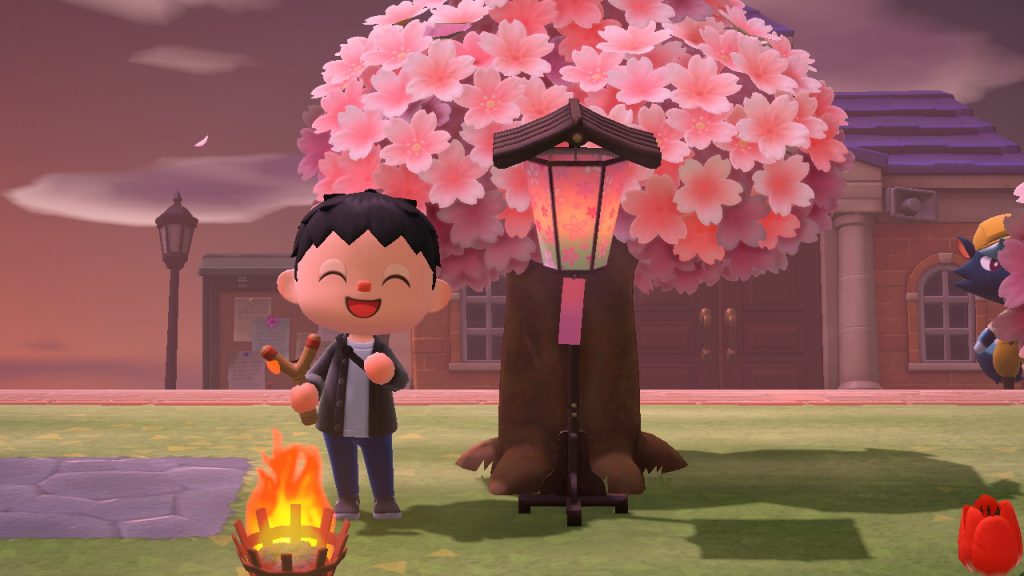
85 hours in and I’m still having a blast.
I started this review off describing the otherwise indescribable Animal Crossing series as magic. While not without its quirks and frustrations, Nintendo has managed to take the franchise and reimagine it — using the company’s DIY workbench to craft something new yet always recognizable. The game has such wide appeal and has taken the world by storm — just look at TikTok, at Reddit, at Twitter for any proof you may need. It’s grabbed hold of my friends who otherwise have never shown any interest in the series. Maybe that’s because it came at the perfect time — when a globe-shaking pandemic has swept the planet and forced millions into quarantine — or maybe it’s just because the game is that good.
Whatever the case, Animal Crossing: New Horizons is magic reinvented. It’s been seven years since the last mainline entry, Animal Crossing: New Leaf, and 12 years since the last console entry, City Folk. To all long-time fans and newcomers, let me tell you: It was well worth the wait.
Leave a Comment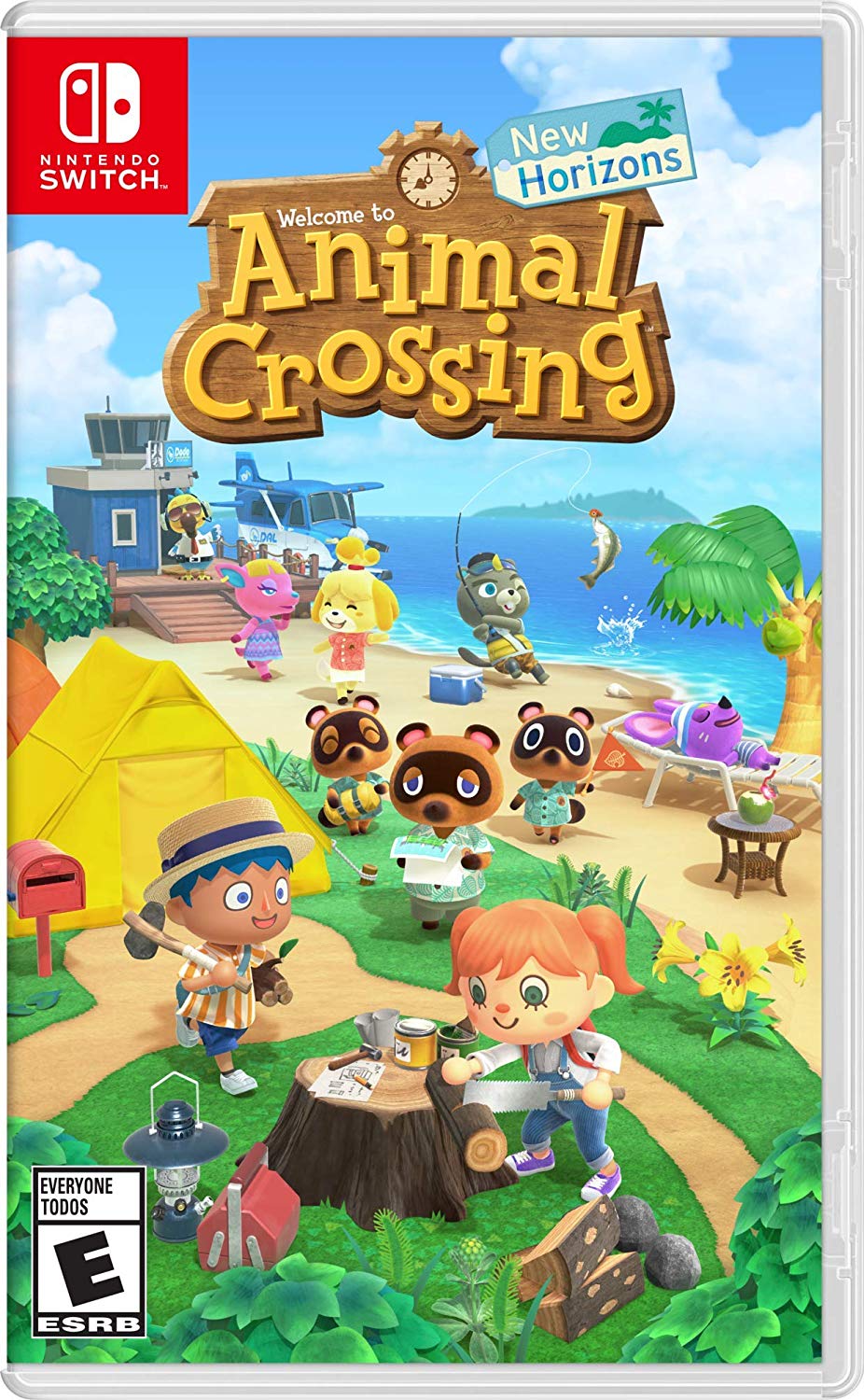
System: Nintendo Switch
Release Date: March 20, 2020
Categories: Life Simulation
Publisher: Nintendo
Developer: Nintendo EPD
